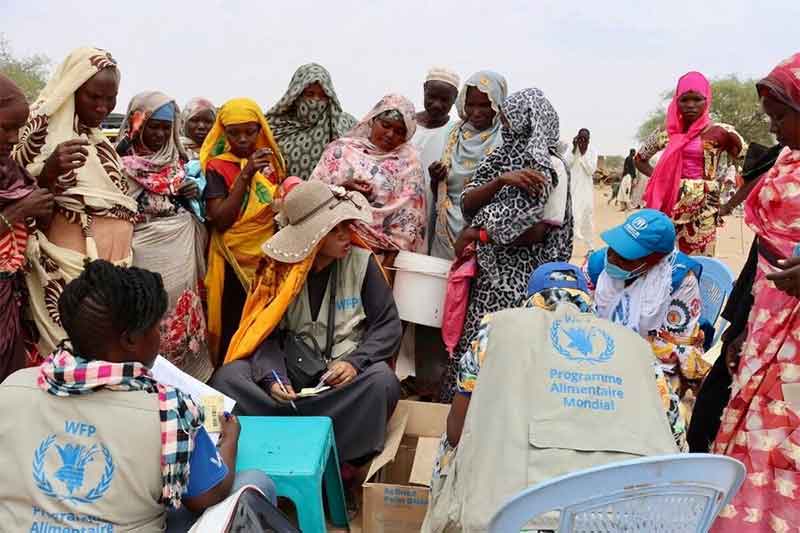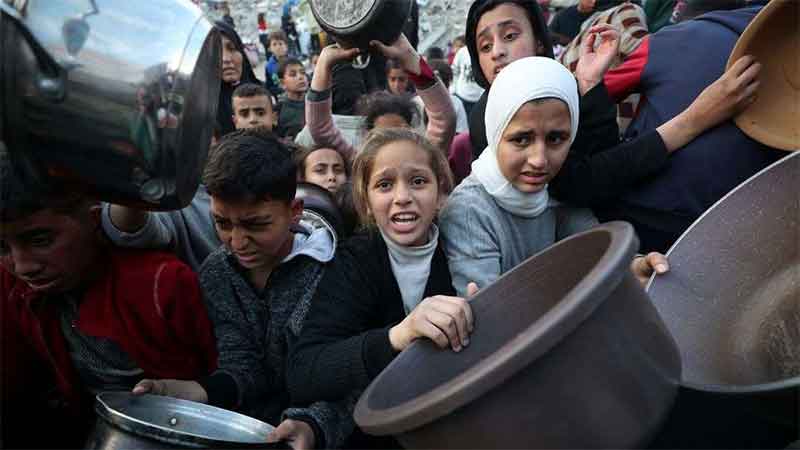
Belying the confidence of the World Food Day theme of 2023, with its overarching tagline “Water is Life, Water Is Food. Leave No One Behind”, the world is teetering on the brink of a food crisis that threatens to leave many millions behind. World Food Day observed annually is a clarion call to ameliorate hunger and famine for a third of humanity, bereft of nutritious food. The situation has deteriorated dramatically by onslaught of the Black Swan event of Covid-19 pandemic, exacerbated by climate changes and ongoing geopolitical conflicts across the world and that culminated in the Russia-Ukraine War and Israel’s carnage in Gaza. Customarily, World Food Day is one of the most celebrated days in the UN Calendar for the sheer volume of collaborative efforts of some 150 countries that brings together governments, corporations, NGO’s, CSO’s and media into a singular focus of raising awareness and action on the existential need of providing food on the table for millions of unfortunate and less privileged souls across the world.
According to the UN Food and Agricultural Organization’s (FAO), State of Food Security and Nutrition Report 2024, around 757 million people were affected by the escalating hunger levels. Global hunger, measured by the prevalence of undernourishment continued unabated at 9.1% of humanity for the straight three years, post covid pandemic. FAO projections suggest that 582 million people, who, constitute more than 7% of the global population will still be afflicted with hunger and malnourishment by 2030. More than half of this number will be in Africa. The 2024 Global Report on Food Crisis concluded that over 36 million children under 5 years old were acutely malnourished in 2023 and over 36 million in 39 countries are in ‘Emergency’ food insecurity levels, the acuteness denoted by IPC/CH Phase 4+ and based on World Food Program (WPF) CARI Methodology. More than half of Gaza’s warn torn population of 1.2 million are encountering catastrophic IPC/CH Phase 5 famine, partly due to Israeli breach of Geneva Conventions through blockades and restrictions.
Bloomberg Green, a multiplatform news brand focusing on environment and climate change and owned by Bloomberg, embarked on a thought experiment in 2020. It was done to ascertain whether extra acre of forest and agricultural land should be cleared to grow more crops per square feet to feed the entire world, comprising of 7.8 billion people. The results were astonishing. With the current agricultural infrastructure, it is possible to produce 4 billion metric tons of food per year, which is marginally higher than the 3.7 billion tons required to adequately feed every single individual on the planet. Yet, World Hunger Statistics 2023 reminds the fortunate ones, that 783 million people, one in ten, go to bed hungry every single day. On analyzing, the malefactor was found to be resource wastage, both at the production and consumption stages. An FAO study assess the wastage to be 1.3 metric tonnes but University of Edinburg researchers concluded that as high as 44% of agricultural production is never consumed. While in the rich, developed countries, 40% of food is wasted at the retail consumer levels, in developing and poorer nations, around 40% crop losses happen between harvest and warehousing/shelving. This is especially a malady in the Indian subcontinent, where poor agricultural infrastructure in logistics and refrigeration, causes a substantial portion of the produce to rot during in-bound value chain activities.
Conflicts and wars in many parts of the world, especially in sub-Saharan, North African and Middle Eastern countries are main drivers for spiraling numbers of famine and hunger. Violent hotspots of Syria, Central Sahel, northern Nigeria, Central African Republic, eastern Democratic Republic of Congo, Afghanistan, South Sudan, Myanmar, Mozambique, Ethiopia and most recently Ukraine, Haiti and Gaza have witnessed distressingly rising food insecurity. If the war-torn country is import dependent for its food grain consumption in rice, cereals and pulses, then the crisis is exponentially aggravated. A case in point is war in Sudan, where 25 million people across South Sudan and Chad are trapped in a spiral of rapidly deteriorating food security. The depravity is compounded by inaccessibility to reach the crisis zone due to interference, incessant fighting and gross violence by warring factions. Some countries present insurmountable challenges by denying humanitarian access like the Erez and Rafah borders into Gaza strip, that impedes multilateral humanitarian organizations like the World Food Programme to reach out to affected communities with relief aid.
The war in Ukraine has torn asunder global trade of wheat and maize to belligerent, least developed (LDC) African countries. Both Russia and Ukraine qualify for the epithet of “global breadbaskets” as they together account for 30% of globally traded wheat, 70% of sunflower supplies and 20% of maize. Supply chain shocks have perilously shot up food inflation, that puts enormous pressure on the affected countries forex reserves and current account deficits. Civil unrest in Sri Lanka is a classic case of currency depreciation and hyperinflation leading to political unrest and breakdown of democratic process when masses take the streets, besieging and besmirching public and private properties in utter disillusionment. Though international food price index fell 11.5% in 2023, domestic food prices have risen around 30% in low-income countries (LIC), further depressing demand with deleterious effects on food security for the poor.
The Russia-Ukraine War has triggered an energy crisis that has resulted in fuel inflation across the world. European Union is dependent on Russian crude in excess of 25% and natural gas up to 50% of their domestic consumption. Russia is a major supplier of three main groups of fertilizers and is a key player in global energy markets. Since natural gas is also a critical feedstock to produce nitrogen-based fertilizers, fertilizer prices are increasing at record levels. Exports from Black Sea ports have substantially declined since the Russian invasion. Most low-income countries and emerging market economies are reeling from fiscal deficit of 10% of GDP’s on average, expended to fund the fiscal stimulus packages during the Covid-19 pandemic and will be badly hit due to the rising crude prices. In these countries, incomes have fallen due to job losses and subsequent unemployment, plummeting demand have thrown economies into recession, that has further slowed down labor market recoveries are subjected to the additional burden of draining forex reserves and menacing debt-overhangs.
Climate change and environmental degradation have compounded the global food crisis. In 2023, El Nina weather patterns have adversely impacted agriculture and livestock in different parts of the world. Forecasts indicate La Nina weather phenomenon are likely to take over in the latter part of 2024, that could jeopardize agricultural production and worsen food insecurity in the Horn of Africa, Central Asia, and the Caribbean. Severe flooding occurred in Angola, Uganda and Cape Town with landslides in Ethiopia and Wayanad in the South Indian state of Kerala. Human-induced climate change has inflicted its fourth straight year of drought in the Horn of Africa, their worst in 40 years whereas in South Sudan, above- average rainfall runs the risk of flooding Sudd wetlands. Latin America is facing a season of hurricanes and in the Dry Corridor of Central America – comprising of parts of Costa Rica, El Salvador, Guatemala, Honduras and Nicaragua – about 4.9 million people will likely be impacted by require El Nino weather phenomenon. El Nino peaked in 2024 and to put things into perspective, 2023 was the hottest year on record.
Subscribe to Our Newsletter
Get the latest CounterCurrents updates delivered straight to your inbox.
In the wake of unprecedented challenges to global food security and as with any other opportunity in crisis, World Food Programme (WFP) and its affiliates offer the world, a renewed vision of human collaboration and solidarity. Central banks are raising interest rates to combat inflation in developed nations and such monetary policy actions limit global financial flows, creating funding gaps in humanitarian organizations and social change sectors. Therefore, its imperative to develop a multi-stakeholder approach to financing needs where participation/contribution at individual and community levels on a global scale should be planned, organized and executed. The world has reached an inflection point to devise peaceful solutions to armed conflicts, which, is the singular human deterrent to lasting food security in the world. A circular economy could be a viable economic model that has the potential to resolve environmental degradation, reverse climate change and regenerate nature. It is predominantly a change in mindset and such a change in mindset is long overdue for revisiting the purpose of human life and its preservation as a species. For a species that hasn’t hitherto attained total sufficiency and security to the basic need of food, despite abundant natural resources cannot be truly termed advanced.
Jayakhosh Chidambaran is a political commentator















































